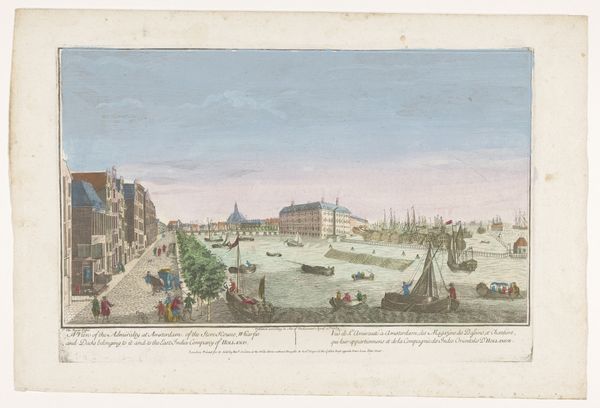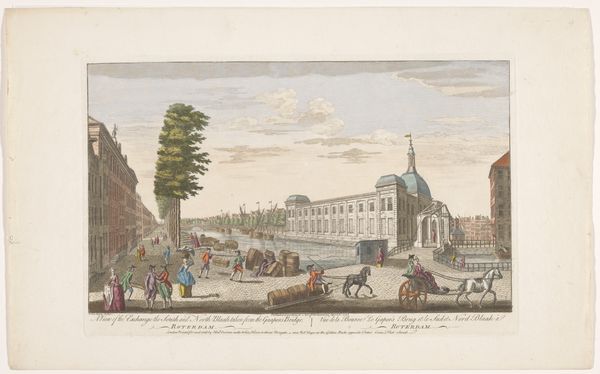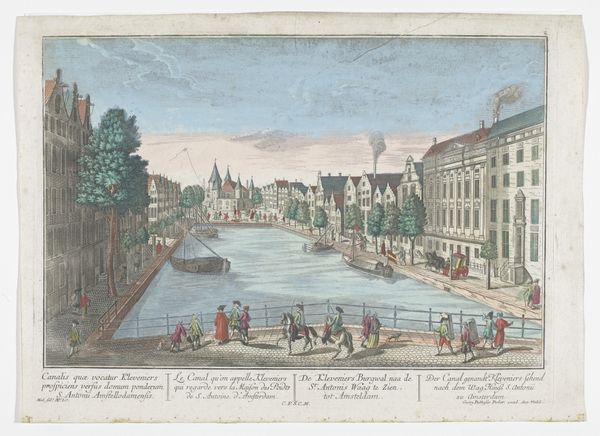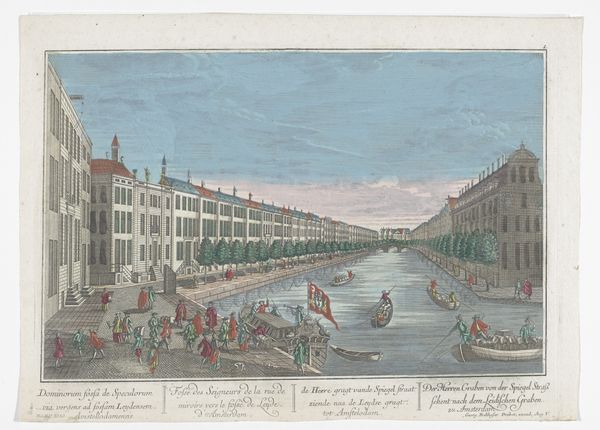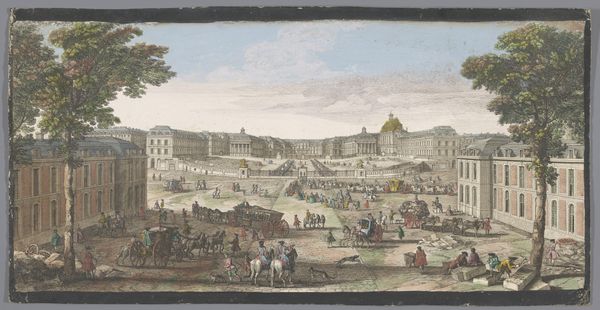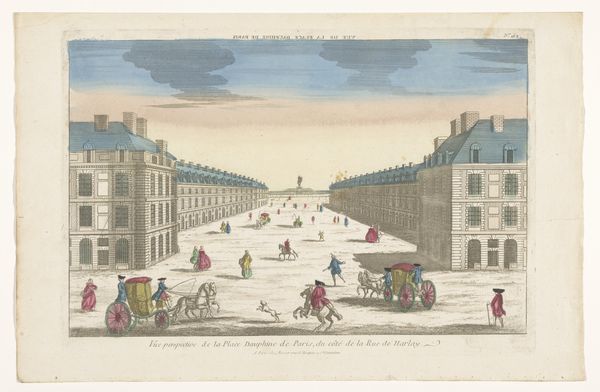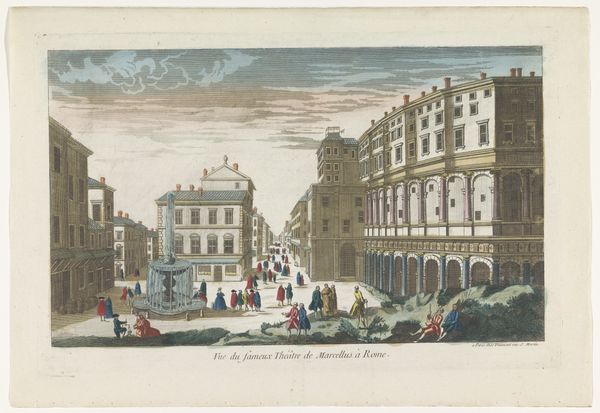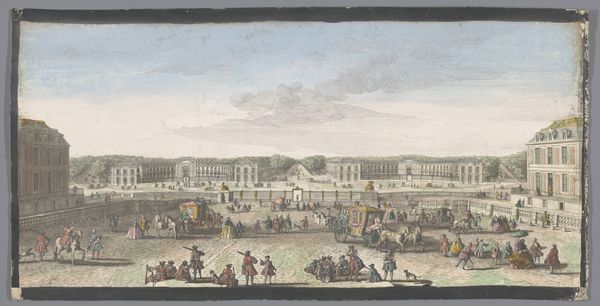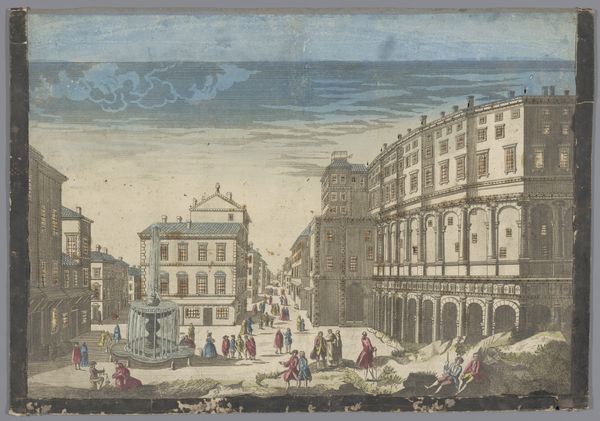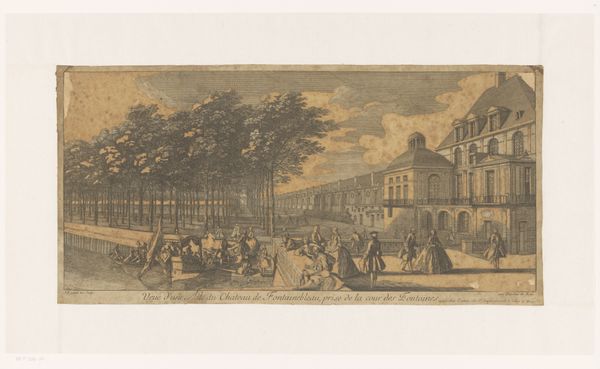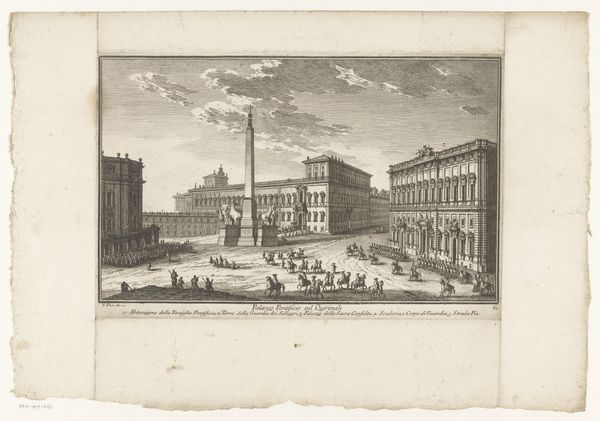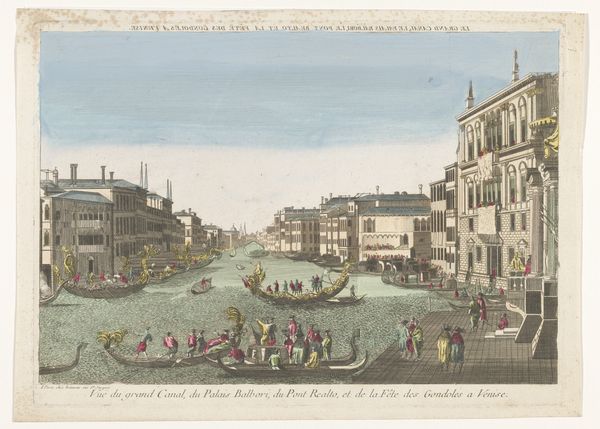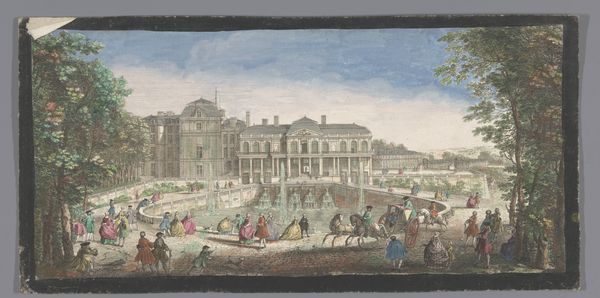
painting, watercolor
#
painting
#
landscape
#
perspective
#
watercolor
#
cityscape
#
genre-painting
#
watercolor
#
rococo
Dimensions: height 268 mm, width 412 mm
Copyright: Rijks Museum: Open Domain
Curator: This is Jean-François Daumont’s “Gezicht op de Beurs te Rotterdam,” a watercolor work completed sometime between 1745 and 1775. Editor: The first impression is dominated by the scene’s overwhelming flatness. The perspective is almost theatrical. A sense of a proscenium arch framing an almost choreographed scene of labor. Curator: I agree. Observe how Daumont utilizes a strict linear perspective to draw the viewer's eye towards the horizon. The architectural details of the Rotterdam Stock Exchange itself are rendered with precision, underscoring the geometric order and rationality of the space. It’s a near-perfect encapsulation of Rococo ideals applied to urban landscape. Editor: But that precision seems undermined by the visible human effort – consider those workers struggling with those barrels of, I presume, goods for trade. Daumont seems equally invested in showing the physicality of commerce. I’m drawn to consider what was actually being traded in Rotterdam at that moment and by whom. It makes me think of global networks of production. Curator: I suppose but I find more significance in the chromatic restraint; the subdued palette creates a serene atmosphere that belies the implied activity, thereby ennobling even these menial laborers within an idealized composition. Daumont elevates genre painting through formal refinement. Editor: The way the artist merges genre painting within the cityscape definitely complicates notions of what should be deemed “high” art. You see these barrels as goods or elements of composition, while I am imagining the kind of timber or spirits they might contain. We are standing in very different relation to materiality! Curator: Indeed. But isn't that precisely the enduring appeal of art, that the visual construction affords myriad, and sometimes opposing, interpretive positions? Editor: Perhaps that lies not so much in the art itself as in how, by virtue of our differing relationships to labor, we are determined to interpret the work. Curator: A compelling argument, even if I find the image's aesthetic properties sufficient on their own merit. Editor: That inherent tension certainly offers a great deal of depth, beyond the artist’s skillful deployment of a limited medium like watercolor, even centuries later.
Comments
No comments
Be the first to comment and join the conversation on the ultimate creative platform.
